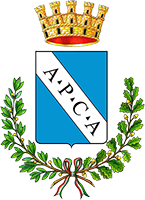
Retaliation was at once organised by Amelia’s inhabitants in 1462, with Papal troops led by Raffaele Caymo. A battle was waged against the Chiaravalle who were badly defeated near their own Canale Castle which in turn was dismantled upon orders from Pope Pius II.
Today, Collicello’s walls are still well-preserved, as is the entrance with the external arch ringed in ashlar stones, the eight beautiful towers one of which faces the ruined Canale Castle. The frescoes in the Parish Church of St. John the Evangelist are quite remarkable: in the bay of the apse the painter Benedetto Cascianelli from Todi depicted in 1948 The Madonna with Child between St. Michael the Archangel and St. John the Evangelist with a view of Collicello. In the countryside, just outside the village, the little Church “Madonna of Graces” stands, with its fine ribbed bell tower. The church houses a decoration articulated by frames containing frescoes where countryside landscapes stand, within figures of Saints. They have been incorrectly referred to the Renaissance Age, but they are date from the first half of the 17th century, as testified by the presence of San Carlo Borromeo (Arona 1538 – Milano 1584), who was canonized in 1610.
From Collicello, some pleasant trips can be started: climbing up among the woods, a few hundred meters away from the village, are the remains of Canale Castle. On the street of Galisciano (or Gallisciano), after about a mile, you reach the ruins of the convent of San Francesco, with an adjacent chapel and a cave, called Grotta di San Francesco in honour of St. Francis (Assisi 1182-1226), who loved to retire to the solitude of these kinds of spot, in the middle of the uncontained nature.


